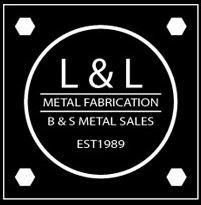STAINLESS STEEL
The outstanding qualities of corrosion resistance, workability, strength, and attractiveness have made stainless steel one of the world’s most versatile materials. Stainless steels are typically low carbon iron alloys to which approximately 12% chromium has been added. It is chromium which enables the stainless steel to resist corrosion. Increasing the chromium content of the alloy renders it more resistant to corrosive media.
Stainless Steel Products: Angles, Channels, Rounds, Squares, Half Rounds, Flats, Sheets, Plates, Floor Plates, Tubing, Pipe, Expanded Metal, and Bar Grating
GUIDE TO SELECTIONSTAINLESS STEEL - CHROME-NICKEL, NON-HARDENING, AUSTENTIC (NON-MAGNETIC)
203 EZ (S20300) – Superior matching austenitic stainless designed specifically for high speed automatic machine operations. Faster speeds, better finish, longer tool life when compared to 303. Same corrosion resistance.
303 (S30300) – Free machining variation of T302/304 for use in automatic machining operations. Corrosion resistant to atmospheric exposures, sterilizing solutions, most organic and many inorganic chemicals, most dyes, nitric acid and foods.
304 (S30400) – The most widely used of the stainless and heat resisting steels. Offers good corrosion resistance to many chemical corrodents and as well as industrial atmospehers. Has very good formability and can be readily welded by all common methods.
304L (S30403) – Extra low carbon variation of T304 avoids harmful carbide precipitation due to welding. Same corrosion resistance as T304. Slightly lower mechanical properties than T304.
309/309S (S30900, S30908) – Used in high temperature applications. High scale resistance. Corrosion resistance superior to 304. Excellent in resisting sulfite liquors, nitric acid, nitric-sulfuric mixtures, acetic, citric and lactic acids. 309S (.08 max. carbon) resists corrosion in welded parts.
310/310S (S31000, S31008) – Higher alloy content improves the characteristics of 309. Corrosion resistance better than 304. Excellent oxidation resistance. 310S (.08 max. carbon) offers improved corrosion resistance in welded components.
316 (S31600) – Better corrosion and pitting resistance as well as higher strength at elevated temperatures than T304. Used for pumps, valves, textile and chemical equipment, pulp & paper and marine applications.
316L (S31603) – Extra low carbon variation of T316 to avoid carbine precipitation due to welding. Same excellent corrosion resistance of T316.
317L (S31703) – Moly bearing austenitic steel with alloy content somewhat higher than 316. This chemistry gives 317L superior corrosion resistance in difficult environments, as well as higher creep, stress-to-rupture and tensile strengths at elevated temperatures. Applications include FGD scrubbers, chemical and petrochemical processing equipment and pulp and paper equipment.
254 SMO (UNS S31254) – An austenitic specialty stainless steel designed for maximum resistance to pitting and crevice corrosion. With high levels of chromium, molybdenum and nitrogen, 254 SMO is especially suited for high chloride environments such as brackish water, seatwater, pulp mill bleach plants, and other high chloride process streams.
321 (S32100) – Stabilized with titanium for weldments subject to severe corrosion. No carbide precipitation. Excellent resistance to a variety of corrosive media. Immune to most organic chemicals, dyestuffs and many inorganic chemicals.
